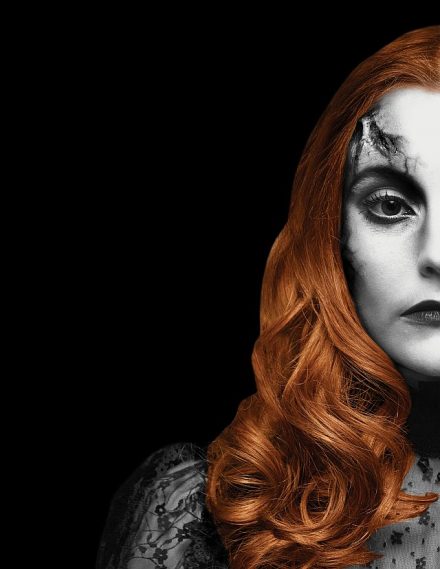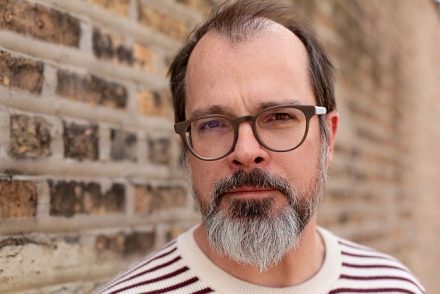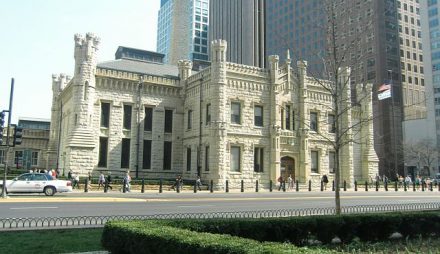
In January, 1818 British author Mary Shelley first published “Frankenstein (subtitle The Modern Prometheus).” This season, Court (Manual Cinema), Lifeline, Lookingglass and Remy Bumppo Theatre Companies are recognizing the 200th anniversary by each doing their version of “Frankenstein.”
Anyone interested in the similarities and differences that the four excellent Chicago companies will emphasize in their productions should try to snag a ticket to “Frankenstein: Unearthed,” Sept. 30, 2018, a 1 p.m. program at Lookingglass Theatre, 821 N. Michigan Ave. in the Chicago Water Tower Water Works. For tickets and information visit Lookingglass Theatre.
Moderated by Chicago Tribune Critic Chris Jones, the event features a panel of Manuel Cinema’s Drew Dir, Lifeline’s Robert Kauzlaric and Ann Sonneville, Lookingglass’ David Catlin and Cordelia Dewdney and Remy Bumppo’s Ian Frank and Eliza Stoughton.
Among the issues examined will be “How is this story told?” To answer that from the Lookingglass perspective, Chicago Theater and Arts talked with ensemble member and the production’s writer/director, David Catlin, about the route traveled to write the script, what his research uncovered and what audiences can expect when the show premieres in 2019.

“Heidi (Stillman, ensemble member and artistic director) had an existing script. I looked at it and read it but it was not grabbing me as I thought it should. So she said we’ll commission you to do an adaptation.
“I’m sure the points were present in the script but they not stick out so I went back to the book. I had missed reading it in high school and didn’t get it in college,” said Catlin.
He did more than read the book. Catlin also researched its author.
“I was amazed this could get out of an 18 year-old and a woman in that time period when women were not encouraged. It was a powerful piece.”
The more he delved into the author’s background the more he understood the elements that made the book powerful.
“What I learned was that there were butcher shops with carcasses hanging on Mary’s street and there was a prison down the street where there were public hangings and that electricity was sometimes used on prisoners to see if it would bring them back to life,” he said.
Catlin also learned that Mary’s personal life was far from idyllic.
“She was surrounded by grief. She lost a child by Percy (Shelly). She lost her step-sister. Percy’s estranged wife drowned her-self.
“Also, her mother had died a few days after Mary was born. Her father remarried and his new wife was the embodiment of the evil step mother. She didn’t want Mary’s father showering his daughter with affection so Mary was shipped off to Scotland. She felt abandoned. “
Catlin explained that Mary met Percy Shelly when he would visit her father who was a famous writer.
“They took up together. He was still married and had children but eventually they did marry because he wanted custody of the children he had with his wife, Harriet.”
Catlin’s adaptation starts where the story was born at Villa Diodati in Cologny near Lake Geneva Switzerland which Lord Byron had rented and had stayed there with John Polidori in 1816. Polidori, a physician and writer, is thought to have created the vampire genre.
Mary and Percy Shelley rented a nearby house and frequently visited Lord Byron.
“They told ghost stories. Mary invented what would become “Frankenstein.” Polidori, a doctor created what would become his short story: “The Vampyre.”
“What I decided to do was to act Mary’s story out with five guests who were there that night. Percy plays Victor Frankenstein. Byron plays the creature and Mary plays one of the characters,” said Catlin.
He added, “Mary doesn’t give the creature a name. Frankenstein is the scientist who creates him.

The production will have both aspects, the acting out of the story at Lord Byron’s house, and the story itself.
“Where the story goes on and strikes deeply, we stop. A crack opens to the scene.
“It will go back to what was happening in real life with Mary back to being herself, then there will be a change, maybe music and lights,” Caitlin said.
He also sees “Frankenstein” as a morality issue.
“There is something about “Frankenstein that is so inspiring. It raises questions about ethical responsibility and science,” he said.
He pointed out that scientific inventions should benefit humankind but that some items such as smart phones and lap tops could possibly be misused to allow unauthorized people to listen and watch others.
He also looked at the issue of creation.
“Bringing life into the world as Frankenstein did circumvents women’s role and God. In the story, Frankenstein becomes obsessed with his creature. He, himself, becomes a monster. He loses sight of what is moral,” Catlin.said.
He added, “What strikes me about the story is that this creature doesn’t have a name and is not a monster originally. He was different. He looked different, and his behavior was different but he was quite intelligent.
“He learned to speak and articulate his thoughts but because he looked different he was treated differently. All he wanted was companionship, love, so he became a monster. It has always fascinated me by what corrupts us, what can turns us into monsters.
Summing up the story, Catlin said, “It was written 200 years ago but its immediacy is still readily apparent.”
DETAILS: Mary Shelley’s Frankenstein, written and directed by ensemble member David Catlin will be at Lookingglass Theatre Company, 821 N. Michigan Ave., May 8 through Aug. 4, 2019. For tickets and other information call (312) 337-0665) and visit Lookingglass Theatre.
Jodie Jacobs
